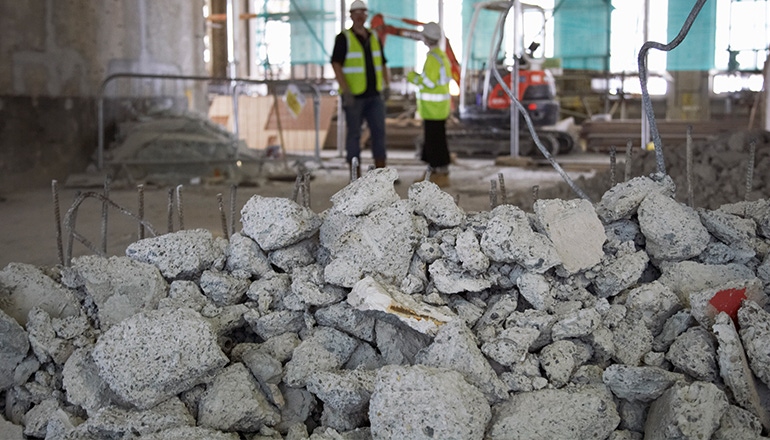Concrete is quite literally the building block of modern society. It is the foundation on which we walk and the shelter in which we live.
April 20, 2023

Concrete is quite literally the building block of modern society. It is the foundation on which we walk and the shelter in which we live. In searching for innovative ways to pursue a circular economy, one scholar is exploring unconventional materials, typically bound for landfills, to make concrete a more sustainable material.
Fly ash is an integral component in concrete production. Usually sourced from coal-fired electric and steam generating plants, fly ash replaces cement in concrete and offers substantial benefits toward sustainability and durability. A major use of fly ash is in concrete infrastructure, including our roads and bridges. However, shutdowns in coal power plants in the US are causing a reduction in availability of fly ash. While this may appear to limit the utility of fly ash as a part of concrete production, billions of tons of fly ash are available for use in ash landfills and ponds.
Research conducted by University of Miami Ph.D. candidate Ying Wang explores the possible beneficial reuse of unconventionally-sourced fly ash. Ying is an Environmental Research & Education Foundation scholar and says of her work: “My awareness of global solid waste issues started when I was a kid. I noticed and was troubled by how much solid waste was landfilled, improperly stockpiled or becoming a source of pollution. During my studies as an undergraduate and Master’s student, I was interested in finding better ways to utilize solid waste materials. This interest has led to my Ph.D. where a major focus is on sustainability in the concrete industry through better utilization of fly ashes, including ponded and landfilled materials.”
Ying’s innovative research focuses both on understanding the fundamental aspects of reactivity of landfilled/ponded fly ashes, but also on increasing the practical use of these materials through changes in the American Society for Testing and Materials (ASTM) strength index. This index, used to measure the ratio of the strength of cement concrete vs. fly ash concrete, is the basis of ASTM standards followed by concrete manufacturers across the nation. Updating these standards so that they allow for better concrete manufacturing is a key outcome of Ying’s research. While making changes in fly ash specifications is no simple task, updating the testing measures will provide broad benefit to both producers and consumers.
The new tests will allow for unconventional (i.e. ponded, reclaimed, off-spec) fly ash to be used in building construction, which will enhance concrete quality, and help alleviate the shortage of production fly ash for producers. Such changes will hopefully lead to the improvement of fly ash specifications and the greater use of unconventional fly ashes in construction. Unconventionally sourced fly ash, including that coming from landfills, has positive economic and environmental implications, and will aid in the management of fly ash and other solid waste materials in the US.
The two key challenges in using fly ash in concrete are to ensure that the chemical reactions that cause concrete to form can still take place successfully with this new material and verify that the strength of the alternative concrete is just as strong as its conventional counterpart. The potential positive results of reactivating fly ash are worth confronting these challenges. These alternative uses can reduce the risks affiliated with ash disposal, such as the 2014 coal ash spill into the Dan River. Therefore, finding a beneficial purpose for fly ash helps mitigate environmental risk and has the potential for improved sustainability.
About the Author(s)
You May Also Like


